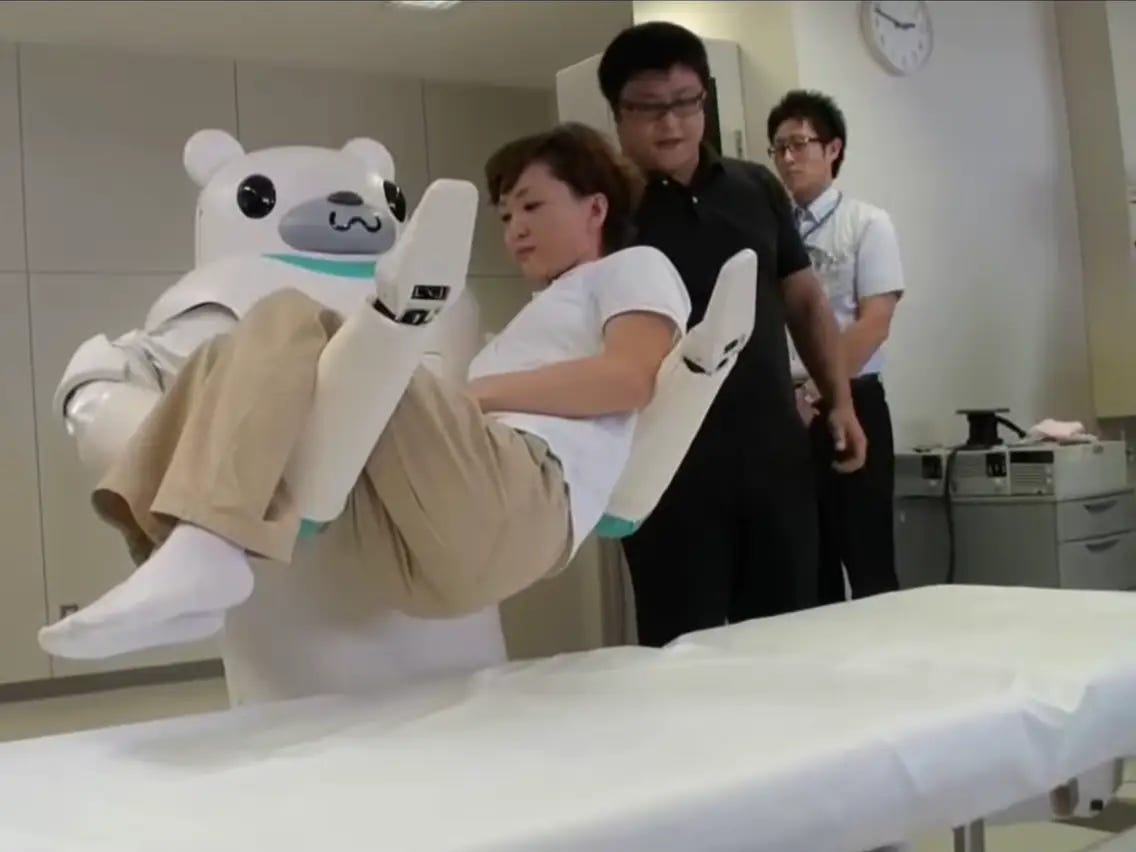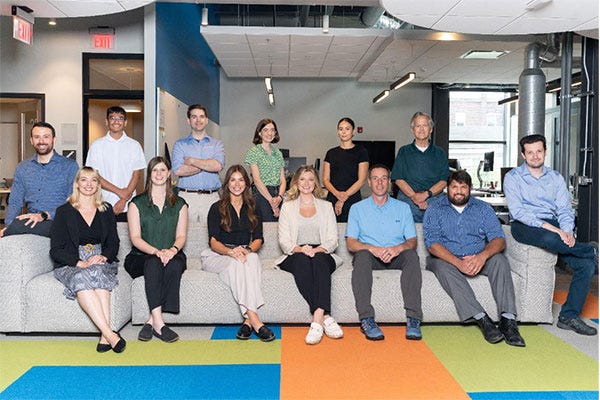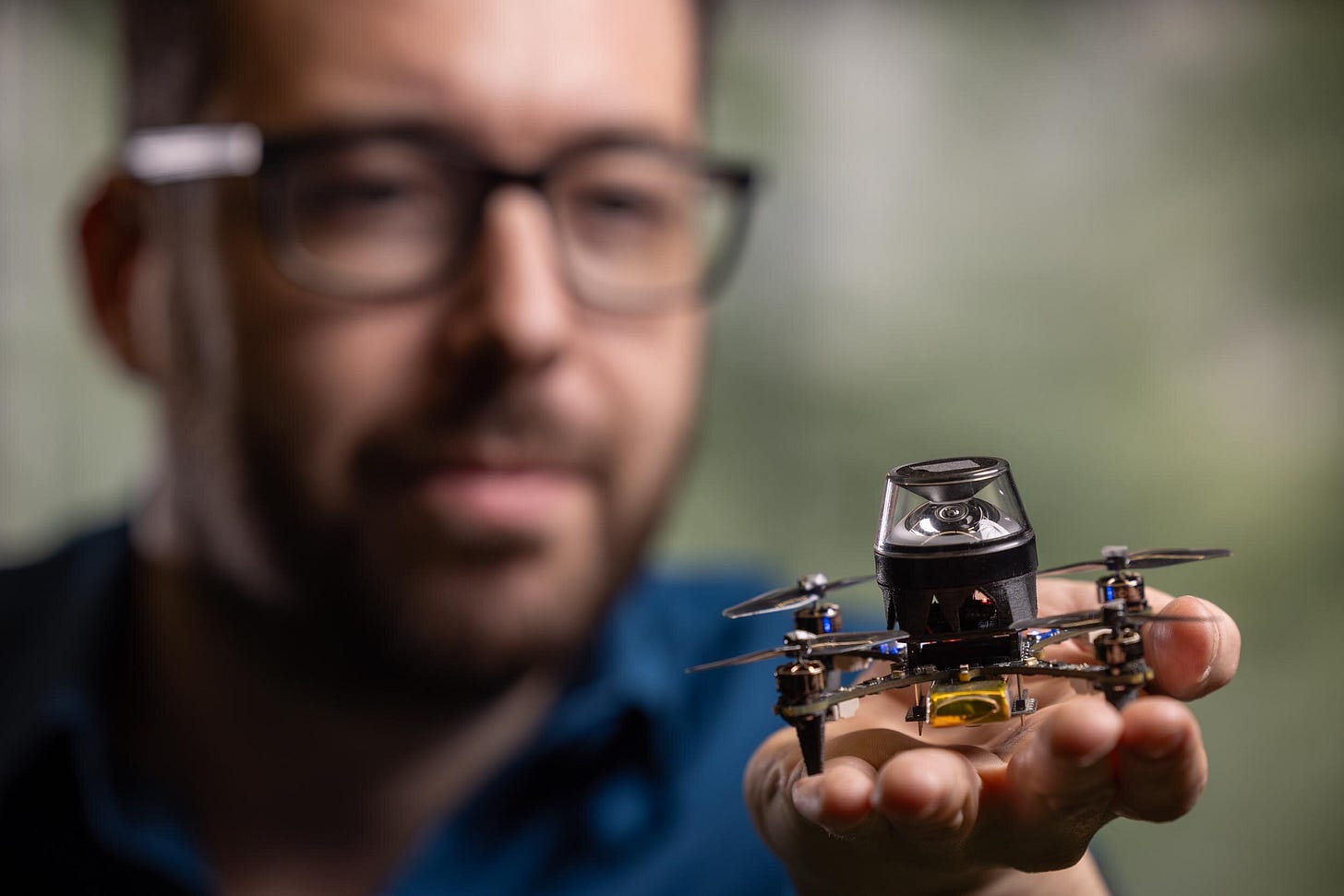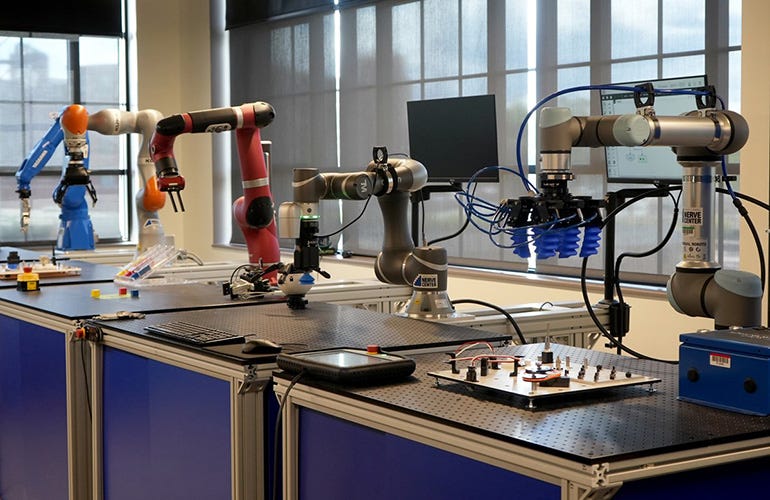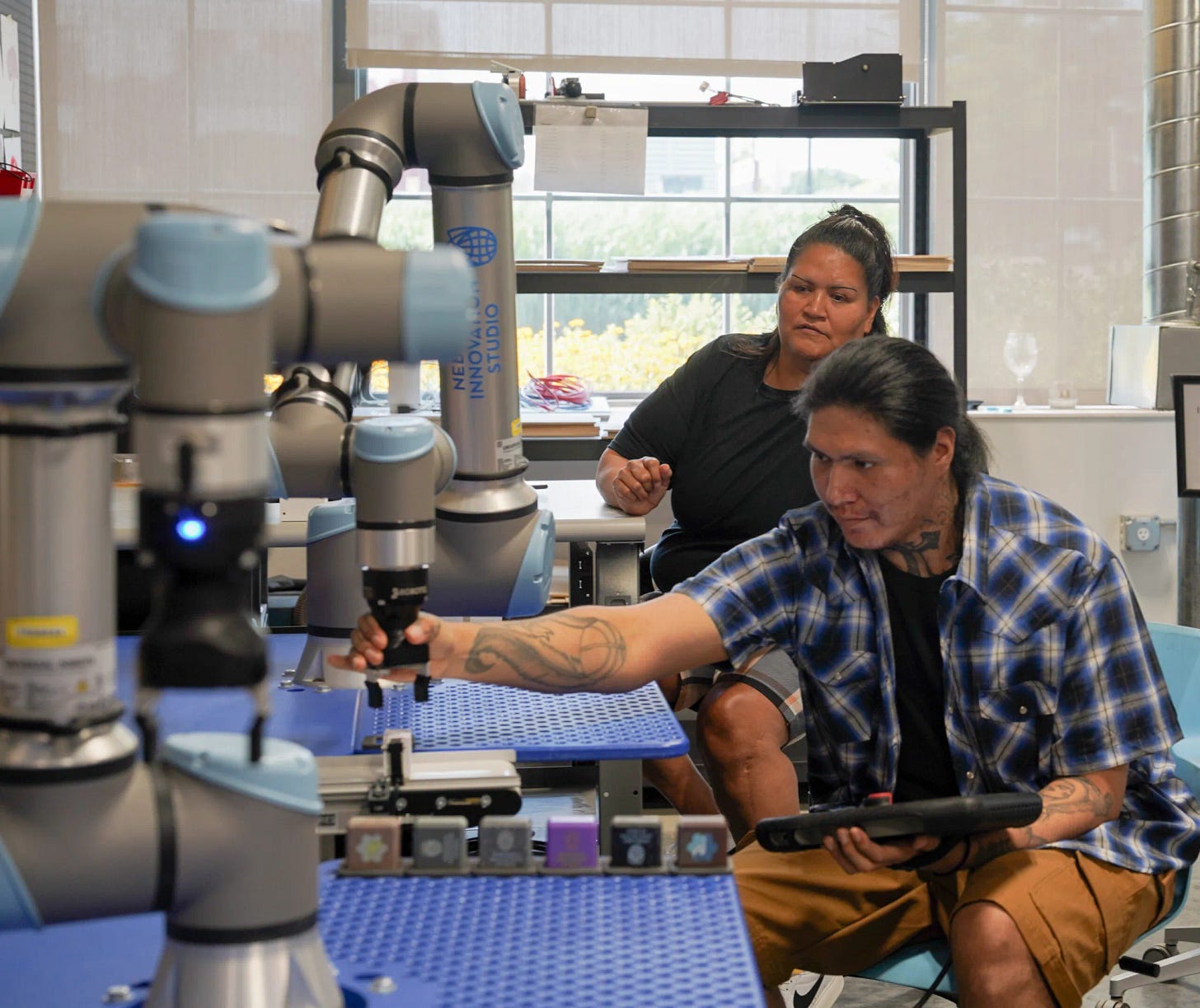Can A Robot Commit Suicide?
A recent incident in South Korea has shown the dark side of our drive to anthropomorphize our technology
Aaron’s Thoughts On The Week
“The uncanny valley exists not just in robots, but also within ourselves.” - Anna Wiener
A few weeks ago, an office robot in South Korea fell down a flight of stairs, damaging itself beyond repair. This is not the first time a robot has fallen downstairs, and it won’t be the last. However, the way the mass media covered it made many of us in the robotics industry fume. Many said the robot committed suicide because it was overworked. After a few outlets made this claim, it became a tsunami amongst others across the globe. Why? Because it got people clicking on the article. The old nightly news adage goes, “If it bleeds, it leads”, and saying a robot committed suicide got the eyeballs.
The notion of a robot committing suicide, as sensational as it may sound, fundamentally misconstrues the essence of robotic functionality and human psychology. Robots, as complex and sophisticated as they might be, lack the cognitive and emotional capabilities required to commit suicide. In reality, someone failed to properly program the robot, or the robot had a major navigation failure that allowed it to move to an area it had no business being in, and an accident happened. Luckily, no person was in the stairwell when the incident occurred because then we would be talking about something similar to a Chinese Mall incident that happened several years back.
So today I want to talk about what appears to be the growing need by us humans to attribute human actions such as suicide to robots, our drive to make robots “look” like us, and the broader implications of humanizing technology.
The Cognitive Chasm: Robots and Human Thought
Robots, regardless of their complexity, are fundamentally different from humans. They are created to execute tasks precisely and efficiently, following instructions encoded in their software. These instructions guide their actions, reactions, and decision-making processes but do not allow robots to experience emotions or subjective states of being. In his book, Flesh and Machines: How Robots Will Change Us, Rodney Brooks notes that robots’ behavior is determined by their programming and the data they process, not by personal experiences or feelings.
In humans, the act of suicide is deeply rooted in psychological and emotional turmoil. It involves a conscious decision to end one's life, often after prolonged periods of mental distress. Numerous research pieces suggest that factors such as social isolation, perceived burdensomeness, and a lack of belongingness play significant roles in suicidal behavior. These complex, multifaceted experiences are inherently human and cannot be replicated by robots, which lack the cognitive and emotional frameworks necessary to understand or experience such states.
For those who have lost a loved one to suicide, it can be close to soul-crushing to read articles about a robot committing suicide because it trivializes their loved one’s struggles. It can be seen as a sick joke by both those who have lost a loved one and those who program robots that know a robot can’t commit suicide. Combine that with those of us in the robotics industry, which are both camps, and you can see how upsetting it can become.
The Uncanny Valley and the Desire for Human-Like Robots
In 1970, Masahiro Mori proposed his Uncanny Valley hypothesis to explore the relationship between robots’ human-like appearance and the emotional responses they evoke. As robots become more lifelike, they initially appear more familiar and comforting. However, once they reach a point where they are almost, but not quite, human, they tend to evoke feelings of eeriness and discomfort. This phenomenon highlights a psychological threshold where slight imperfections in human-like robots make them appear unsettling.
This discomfort is linked to our deep-seated cognitive and emotional mechanisms. Studies by Karl MacDorman and Hiroshi Ishiguro in 2006 indicate that the Uncanny Valley effect may be triggered by the brain's difficulty reconciling human-like features with the knowledge that the entity is not truly human. This creates a cognitive dissonance that leads to unease and discomfort.
Despite the Uncanny Valley, there is a persistent drive to create robots that closely resemble humans. One only has to look at the recent boom in humanoids and the approximately $1.6 billion invested in those companies in the past five years. This drive is fueled by a desire to make robots more relatable and to facilitate smoother human-robot interactions.
Cynthia Breazeal argues that anthropomorphic robots can foster better communication and empathy from human users, enhancing their effectiveness in roles such as caregivers, companions, and assistants. This is one of the reasons we are seeing more of these types of robots in settings like Japan’s Robobear to help nurses lift patients.
The Dangers of Anthropomorphizing Technology
While creating human-like robots can have practical benefits, it poses significant ethical and psychological risks. Anthropomorphizing robots—attributing human characteristics, emotions, and intentions to them—can lead to misconceptions and unrealistic expectations. According to Sherry Turkle, people may develop emotional attachments to robots, treating them as if they possess genuine emotions and consciousness. This can blur the lines between reality and fiction, leading to misunderstandings about the capabilities and limitations of these machines.
One of the primary dangers of anthropomorphizing technology is the potential for desensitization. When we attribute human-like qualities to robots, we risk trivializing genuine human experiences and emotions. For instance, the concept of a robot "committing suicide" reduces a profoundly human and tragic act to a mere mechanical malfunction, stripping it of its emotional and psychological gravity. This not only undermines the severity of mental health issues but also distorts our understanding of robotics.
Studies have shown that people's reactions to robot errors depend on whether robots are humanoid or non-humanoid. Humanoid robots often face harsher criticism for mistakes, as their human-like appearance increases expectations of doing the right thing and not forgiving errors. In other words, if you look human, you better act and work like one.
Responsible Innovation and Public Education
To address these challenges, it is essential for both technology creators and users to maintain a clear and rational perspective on robots' nature. Engineers and designers must prioritize transparency, ensuring that the public is well informed about robots' capabilities and limitations. Tell us whether the incident was due to a programming or mechanical issue. I know this will be difficult due to our legal framework and fear of being sued, but there needs to be more transparency when things go wrong. Just ask the Autonomous Vehicle industry how they are doing with their lack of it.
Public education plays a crucial role in fostering a realistic understanding of the technologies that keep popping up into our daily lives. Programs that emphasize the mechanical nature of robots and their role as tools can help mitigate the tendency to anthropomorphize. According to Kate Darling, creating a more informed public can lead to healthier interactions with technology, where users appreciate the benefits of robots without attributing unrealistic characteristics to them.
We need people to both understand that robots are robots and humans are humans. While we should treat robots as the tools they are, we should also be respectful and patient in our interactions.
TL;DR
The idea of a robot committing suicide exemplifies the complexities and dangers of anthropomorphizing technology. While robots can be designed to resemble humans and perform tasks efficiently, they lack the cognitive and emotional depth that defines what makes us human. Our desire to humanize robots highlights a psychological tension that must be carefully managed. By maintaining a clear distinction between humans and machines and fostering responsible innovation and education, we can navigate these challenges and harness the benefits of robotics without losing sight of our humanity.
Robot News Of The Week
World's fastest brick-laying construction robot lands on American shores
The Hadrian X, a robotic truck with a 105-ft telescopic boom arm developed by FBR, has arrived in Florida from Australia. It can construct up to 10 houses, stacking 500 masonry blocks per hour. The robot, which doesn't require breaks, will first undergo testing in Fort Myers. If successful, it will build five to ten single-story homes as part of a demonstration program. This initiative is a joint venture with CRH Ventures Americas, aiming to establish FBR as CRH's exclusive "Wall as a Service" provider in the U.S., potentially leading to the purchase of 300 Hadrian X units for building robot-constructed communities.
20 million meals later, Chef Robotics is making robotic food prep work
Food prep is ideal for robots due to its repetitive nature and labor shortages in the food industry. Chef Robotics tackled this by deploying robot arms to fast casual restaurants, but faced challenges as robots struggled with tasks humans easily handle. Pivoting to more predictable environments, like mass-produced meals, Chef Robotics successfully deployed autonomous arms in assembly lines. These robots handle a variety of ingredients, gathering real-world data to improve their performance. Founder Rajat Bhageria envisions robots in ghost kitchens and eventually taking over food service tasks globally, aiming to free humans from repetitive labor.
Innovation Works’ Robotics Factory welcomes 5 companies to Accelerate program
The Robotics Factory in Pittsburgh has welcomed five companies to its second Accelerate program cohort: ForSight Assistive Devices, HeadStrait Labs, Humotech, Journey Robotics, and Reclamation Factory. Each company will receive up to $100,000 in investment, six months of structured programming, mentorship from industry experts, and 12 months of office space. The program supports customer discovery, product development, and market fit. This cohort focuses on diverse robotics applications, including health tech, aviation, and plastic recycling. Notable alumni include CellX Technologies, Voaige, Aquatonomy, and Velo AI, showcasing the program's success in scaling startups.
Robot Research In The News
Robot Dog Cleans Up Beaches With Foot-Mounted Vacuums
Cigarette butts are a major litter problem, with over four trillion tossed on the ground annually. To help combat this, roboticists at the Italian Institute of Technology have developed a quadrupedal robot called VERO, equipped with vacuums to clean up cigarette butts. The robot autonomously locates and collects cigarette butts using its onboard cameras and a neural network. It has been successfully tested in various environments, demonstrating its potential for other tasks such as inspecting infrastructure and crop fields.
Researchers create insect-inspired autonomous navigation strategy for tiny, lightweight robots
Researchers at TU Delft were inspired by how ants navigate and created an insect-inspired autonomous navigation strategy for small robots, allowing them to return home with minimal computation and memory. Tiny robots have potential real-world applications due to their safety and ability to navigate narrow spaces. However, their limited resources make autonomous navigation challenging. Drawing inspiration from insects, the researchers developed a strategy that allowed a 56-gram drone to cover distances of up to 100 meters using only 0.65 kilobytes.
Making it easier to compare robot manipulation research
Researchers have been working for years to enhance robot manipulation skills, but the complexity of the full system involving various parts and diverse research makes it difficult to innovate. To address this issue, a team of researchers is developing a standardized ecosystem called COMPARE, aiming to facilitate open-source research comparison and implementation in robot manipulation. The initiative has received funding from the National Science Foundation (NSF), and the team is collaborating with industry and academic institutions to develop research standards. They plan to run workshops to put the research standards into practice as they are developed.
Robot Workforce Story Of The Week
Transformational Training and Workforce Development with Industrial Robotics
A new training program supported by the Heartland Robotics Cluster offers certification in robot operation through the Nebraska Innovation Studio at the University of Nebraska-Lincoln. The program, sponsored by private businesses, equips participants with hands-on skills in robotics, automation, and embedded systems. It aims to transform tomorrow’s workforce and is part of a $25 million grant from the U.S. Department of Commerce. Training is open to anyone over 18, with individual fees ranging from $200 to $1000.
Robot Video Of The Week
With the Olympics right around the corner, let’s take a look at some of the “robots” that are helping the athletes. South Korea already has some of the highest concentration of robotics in the world, so it is no surprise that robotics is helping the South Korean archery team to excel.
Upcoming Robot Events
July 17-21 RoboCup (Eindhoven)
Aug. 6-9 International Woodworking Fair (Chicago, IL)
Sept. 9-14 IMTS (Chicago, IL)
Oct. 1-3 International Robot Safety Conference (Cincinnati, OH)
Oct. 7 Humanoid Robot Forum (Memphis, TN)
Oct. 8-10 Autonomous Mobile Robots & Logistics Conference (Memphis, TN)
Oct. 14-18 International Conference on Intelligent Robots and Systems (Abu Dhabi)
Oct. 15-17 Fabtech (Orlando, FL)
Oct. 16-17 RoboBusiness (Santa Clara, CA)
Oct. 21-23 ROSCon (Odense, Denmark)
Oct. 28-Nov. 1 ASTM Intl. Conference on Advanced Manufacturing (Atlanta, GA)
Nov. 22-24 Humanoids 2024 (Nancy, France)



